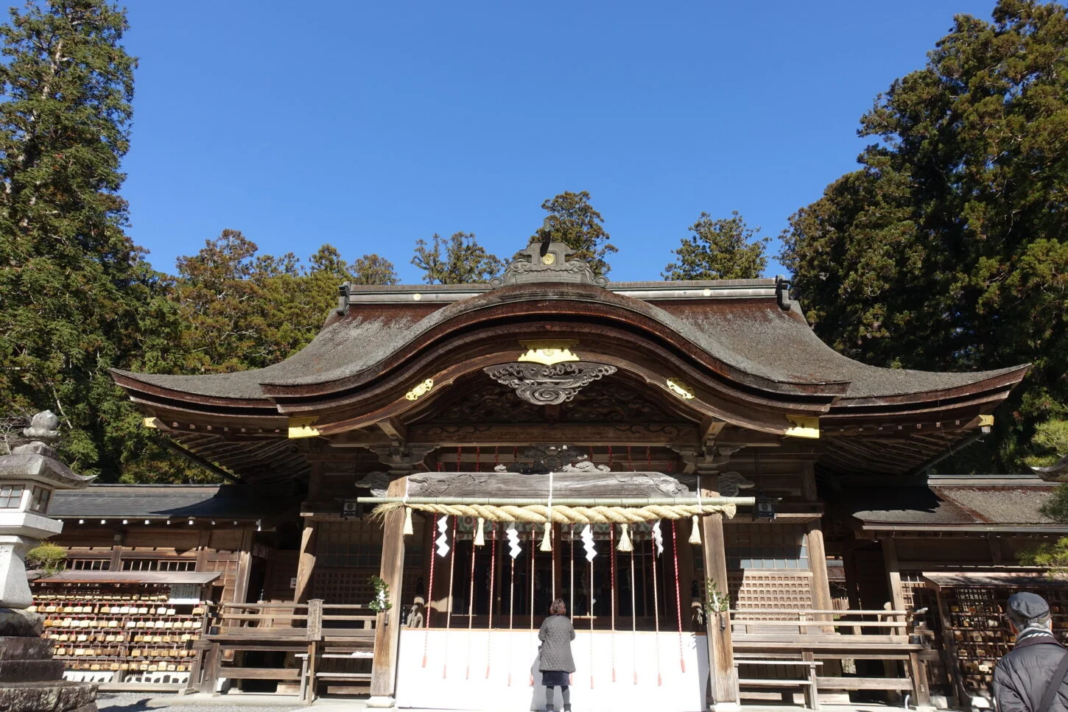Table of Contents
Oguni Shrine is a historic shrine in Morimachi, the little Kyoto of Enshu
History of Oguni Shrine
Oguni Shrine, located in Morimachi in western Shizuoka Prefecture, is the oldest shrine in the region. According to the shrine tradition, its origins date back to the 6th century. In the Kamakura and Muromachi periods, the Imperial family and warlords had deep religious faith, and the shrine was revered as Ichinomiya of Totomi Province. The shrine has a long history, with successive shoguns having built and repaired the shrine buildings and donated to the shrine territory, including Tokugawa Ieyasu rebuilding the shrine during the Edo period (1603-1868).
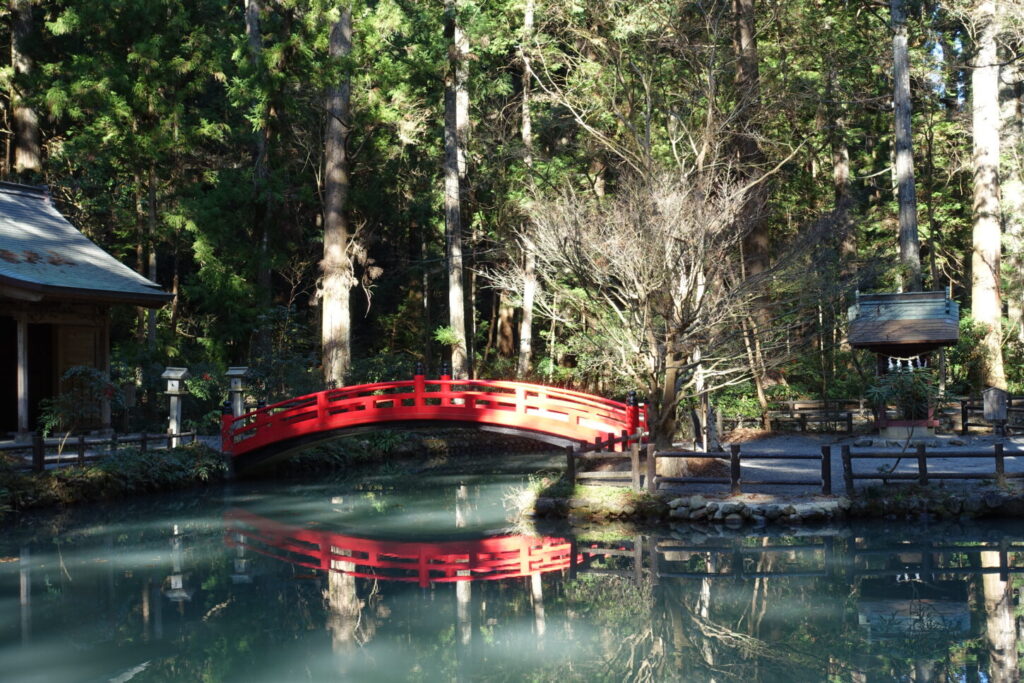
God of Oguni Shrine, Ōnamuchi-no-Mikoto
The Ōnamuchi-no-Mikoto (also called “Okuninushi no Mikoto”) enshrined at Okuni Shrine is the god who appears in the “White Rabbit of Inaba”. In that story, he is depicted as a kind-hearted deity who rescued a rabbit that had been stripped naked. He is generally known and loved as “Daikoku-sama”, and is called in many legends by several names, including “Ohmononushi no Kami” and “Utsushikunitama-no-Kami”. This god exerts great power by giving people knowledge and wisdom about land development, industry development, and medicine. Thus people revered him as the God of Land Management, Prosperity of Industry, Marital Harmony, Matchmaking, and so on.
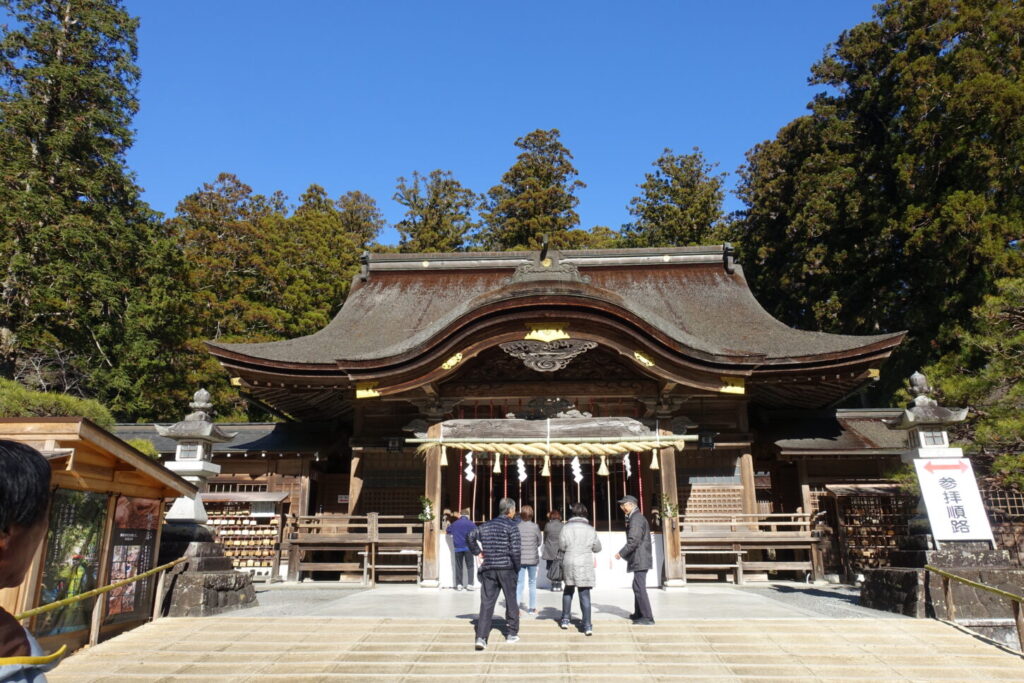
Ancient forest full of minus ions
After paying homage to the main shrine, we took a walk in the ancient forest on the grounds of Okuni Shrine. The Ancient Forest is a vast sanctuary of about 300,000 tsubo (approx. 331,000 m2). Walking through the large cedar and cypress trees, the mysterious atmosphere and the shower of negative ions helps to release the tension of daily life.
The approximately 1,000 maple trees in the forest turn fresh green in spring and deep red and yellow in fall, making it a popular photo spot for social networking. I visited in January so the cool, dignified air that filtered through the trees was very pleasant and refreshing to the body and soul.
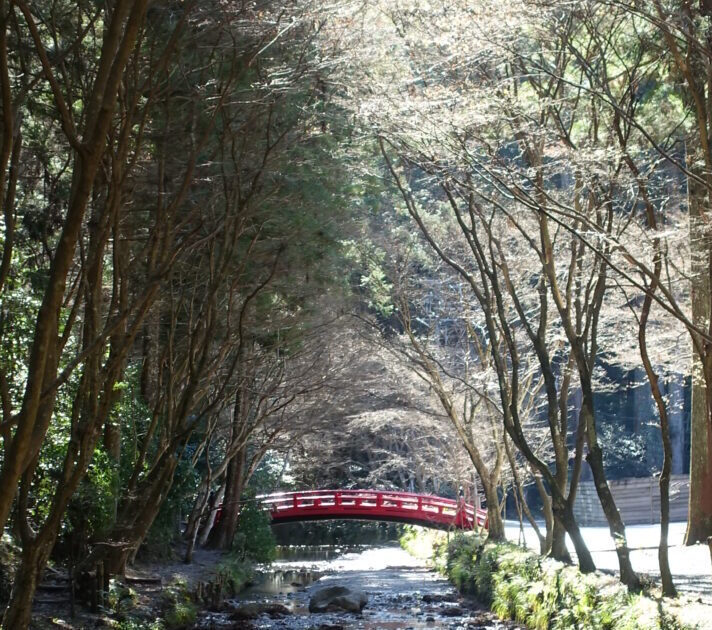
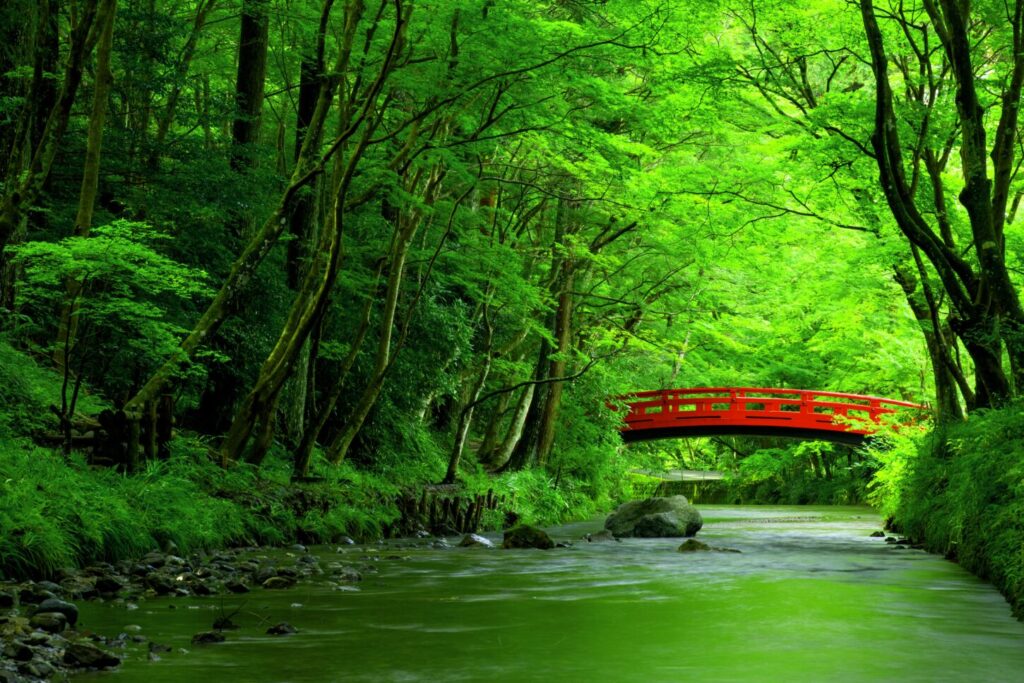

This is the sacred “Oo-sugi” cedar dedicated at the side of the approach to the shrine. Because of its age, and because it was toppled by a typhoon that caused extensive damage to the Japanese archipelago in 1972, the trunk is hollowed out, but the remaining outer annual rings alone are over 500 years old.

Next to the sacred tree is a stone called a “Tachiagari–ishi (rising up stone)”. It is said that Tokugawa Ieyasu sat on this stone and rested when he visited “Okuni Shrine” to pray for good fortune. He then overcame many adversities every time he visited the temple and finally unified the country, thus giving the stone its name. If you feel bad about your past failure, how about coming here to sit on the stone in honor of the Ieyasu story of life, and wishing for a second chance at life?
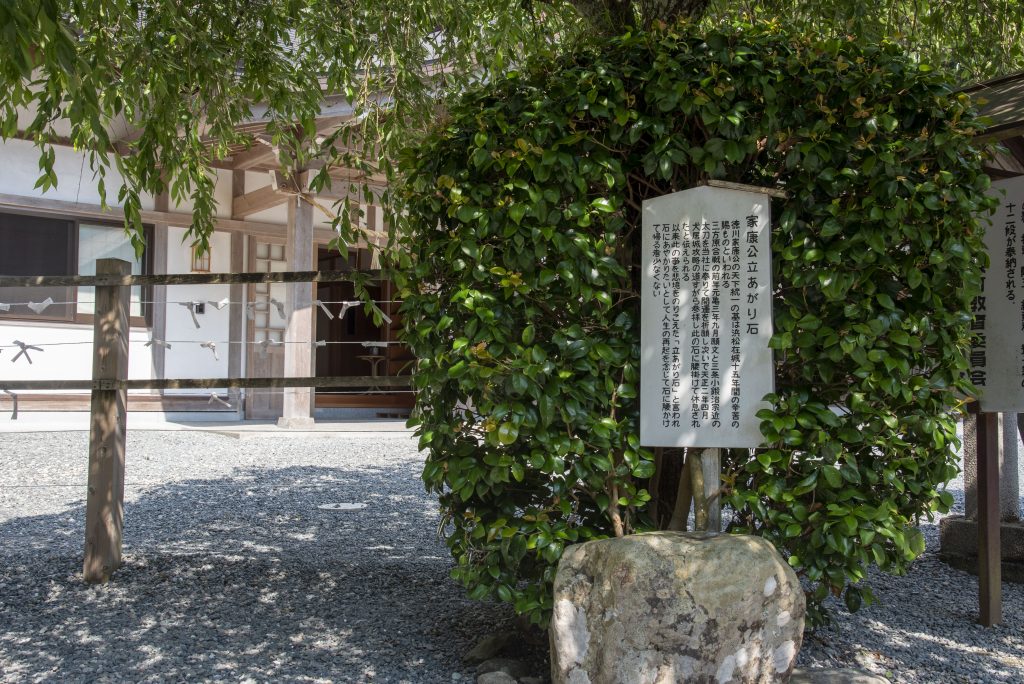
Lastly, we will introduce Koto-machi Pond, an oval-shaped pond along the approach to the temple. On an island in the center of the pond there is the Munakata-sha shrine. There is a custom in this Koto-machi Pond, which is to make a wish and “wait for that” (koto-machi), and when the wish is fulfilled, release carp to express gratitude to the God that granted you the wish.
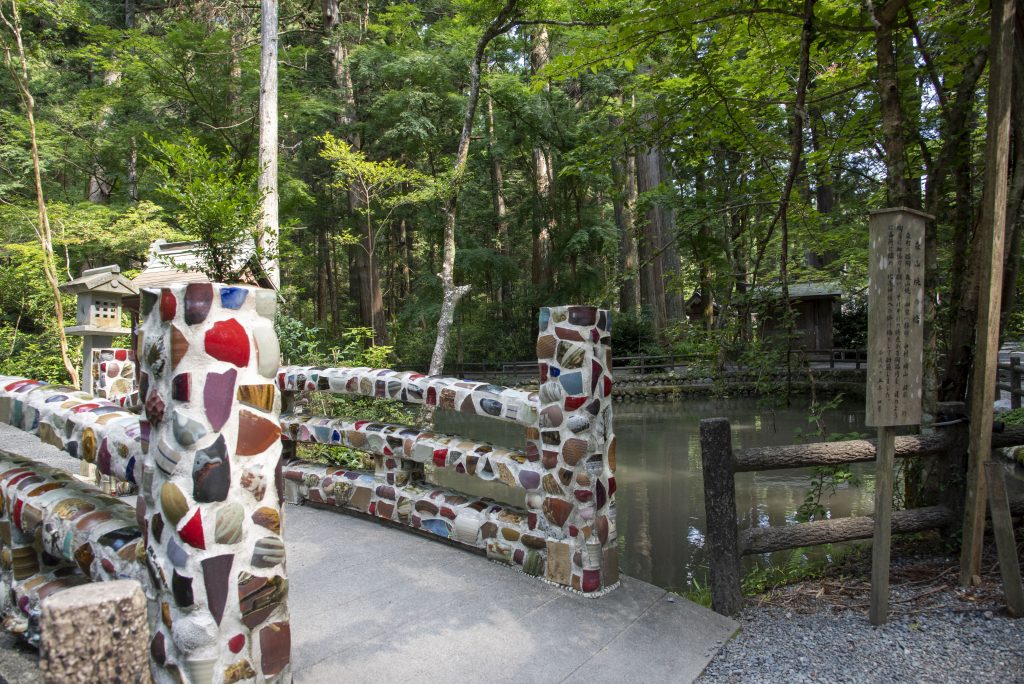
Stroll down Oguni kotomachi Yokocho with its nostalgic and comfortable atmosphere.
After strolling in the ancient forest, visit Oguni kotomachi Alley, where you will find Japanese tea cafes, dumpling shops, rice cracker shops, soba noodle shops, and other small stores. On this day, we had pizza, spaghetti and warabi mochi from KOTOMACHI Cafeteria. Warabi-mochi is a specialty of this place. The handmade, freshly made warabi-mochi are lavishly covered with Shizuoka matcha green tea or with the finest kinako (soybean flour). There are many other lovely sweets for sale, so please stop by Oguni kotomachi Alley for a break after your visit to the shrine, or to purchase souvenirs.
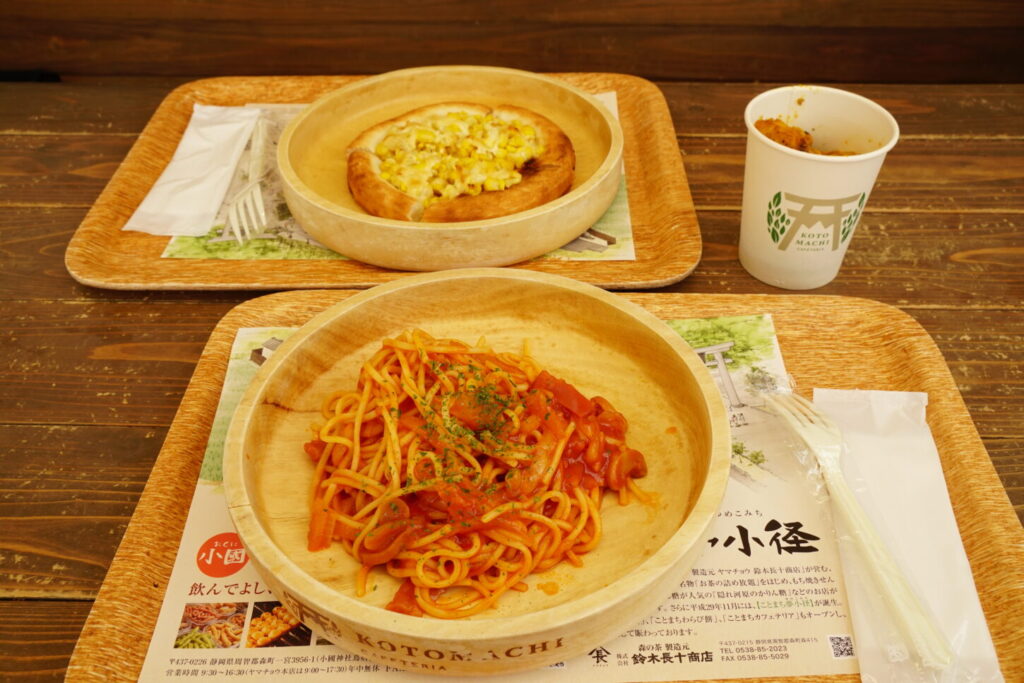
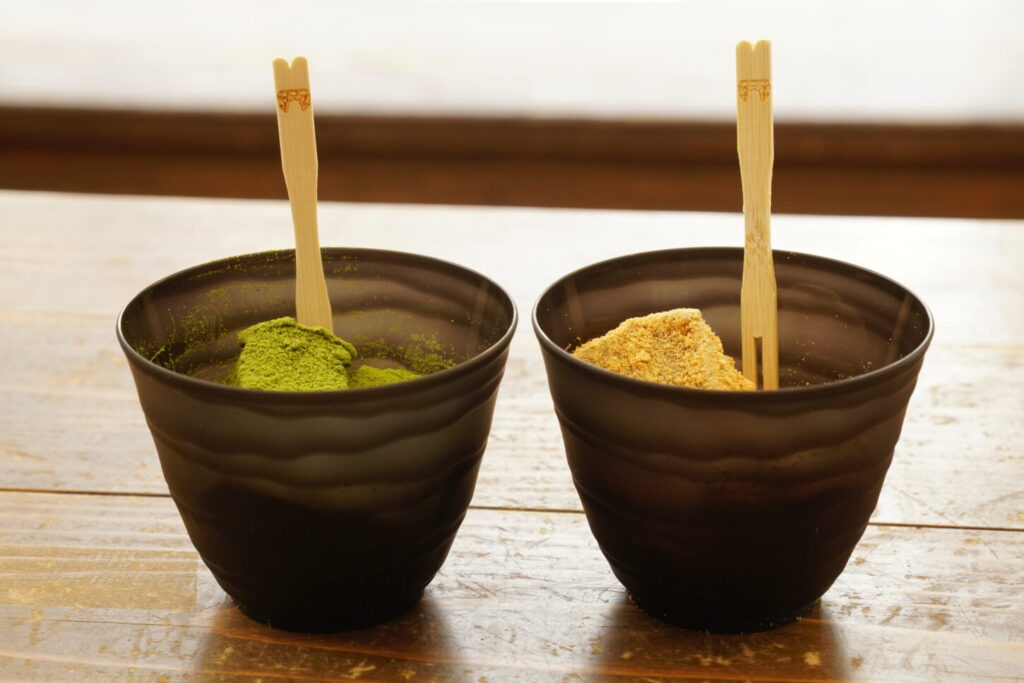


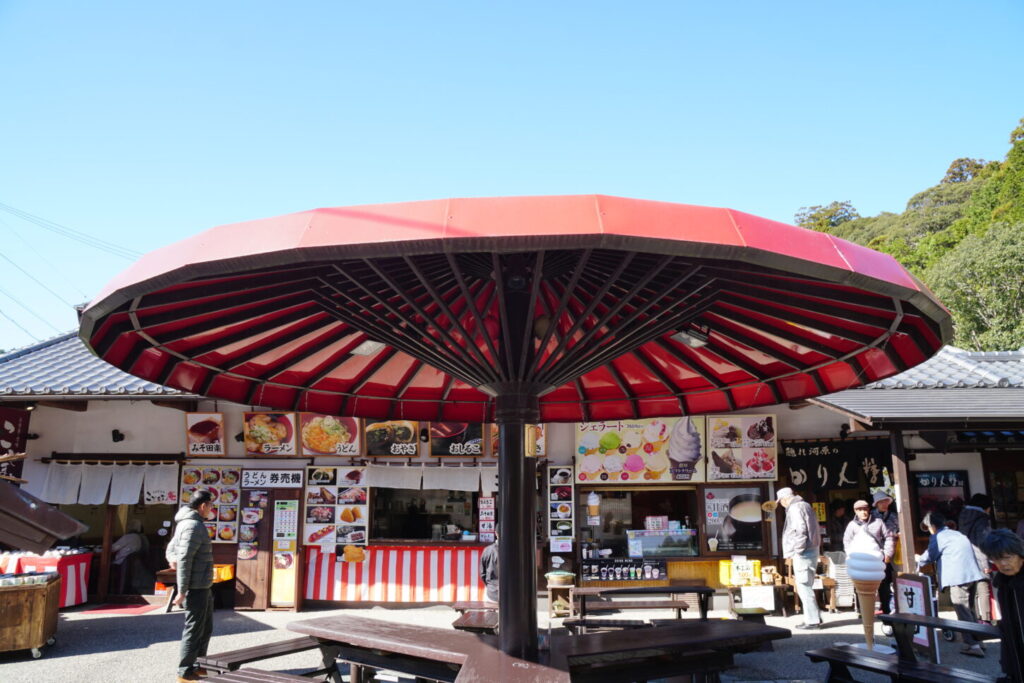
Oguni Shrine
Address: Shizuoka Prefecture, Shuuchi-gun, Mori Town, Ichinomiya 3956-1
Tel: 0538-89-7302
Okuni Kotomachi Alley
Tel: 0538-89-7020
Open: 9:30 ~ 16:30
